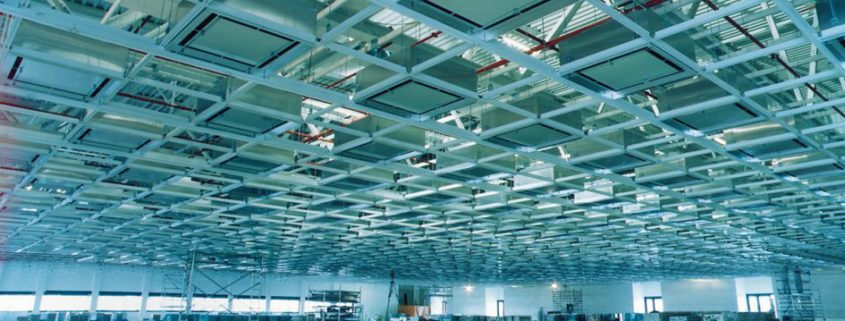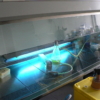Air Filtration and Filtering In Cleanrooms – Part 2
Filter Media Rating
Air filters are commonly described and rated based upon their collection efficiency, pressure drop (or airflow resistance), and particulate-holding capacity. The American Society of Heating, Refrigerating, and Air Conditioning Engineers (ASHRAE) have developed standards 52.1-1992 and 52.2-1999 that classify filters in terms of “Arrestance” and “Efficiency”.
Standard 52.1-1992 measures arrestance, dust spot efficiency, and dust holding capacity. Arrestance means a filter’s ability to capture dust and describes how well an air filter removes larger particles such as dirt, lint, hair, and dust. The dust holding capacity of a filter is the amount by weight of standard dust that the filter will hold without exceeding the resistance 0.18 inch-w.c. for low-resistance filters, 0.50 inch-w.c. for medium-resistance filters and 1.0 inch-w.c. for high-resistance filters. Be aware that, arrestance values may be high; even for low-efficiency filters, and do not adequately indicate the effectiveness of certain filters for chemical or biological protection. Dust spot efficiency measures a filter’s ability to remove large particles, those that tend to soil building interiors. Dust holding capacity is a measure of the total amount of dust a filter is able to hold during a dust loading test. Dust arrestance can be expressed as
µa = 1 – Ca / Cb
Where
µa = dust arrestance
Ca = dust concentration after filter
Cb = dust concentration before filter
Since large particles make up most of the weight in an air sample, a filter could remove a fairly high percentage of those particles while having no effect on the numerous small particles in the sample. Thus, filters with an arrestance of 90 percent have little application in cleanrooms.
ASHRAE Standard 52.2-1999 measures the particle size efficiency (PSE). Efficiency measures the ability of the filter to remove the fine particles from an airstream by measuring the concentration of the material upstream and downstream of the device. If a supplier of filter only indicates efficiency as 95% or 99%, it does not really mean
anything unless it specifies the particle size range.
The ASHRAE Standard 52.2-1999 quantifies filtration efficiency in different particle size ranges and rates results as MERV (Minimum Efficiency Reporting Value) between 1 and 16. This numbering system makes it easier to evaluate and compare mechanical air filters and eliminates some of the confusion regarding the overall effectiveness of any type of a mechanical air filter on removing airborne particulates, especially those that are less than 2 microns in size. A higher MERV indicates a more efficient filter.
HEPA filters
HEPA stands for High Efficiency Particulate Air. The HEPA filters work on diffusion principle to remove particulate matter and are extremely important for maintaining contamination control. These filter particles as small as 0.3 µm (microns) with a 99.97% minimum particle-collective efficiency. This is remarkable considering that the outside air we breathe may contain up to 5 million suspended particles of dust, smog, and pollen in one cubic foot.
These filters typically use glass fiber media and are available in thicknesses of 6” and 12”. These have pressure drop of 1 inch- w.c. when clean and generally need to be replaced when the pressure drop exceeds 2 inch- w.c.
HEPA air filters are not MERV rated as they exceed the ASHRAE test protocol 52.2 used in determining the MERV ratings. In fact, HEPA air filters are the ONLY mechanical air filters that are tested and certified to meet a specific efficiency at a specific particle size. All HEPA air filters must meet a minimum efficiency of 99.97% at 0.3 microns.
ULPA filters
ULPA stands for Ultra Low Particulate Air. Growing market demand from advanced science and technology led to development of ULPA filters which provide a minimum of 99.999% efficiency (0.001% maximum penetration) on 0.3 micron particles for achieving better cleanliness classes and cleaner working environments. These are used for ultra- cleanrooms, where contamination levels have to be controlled at levels better than that which can be achieved with conventional HEPA filters.
Boron free ULPA filters of 99.9997% efficiency for particles down to 0.12 micron size for Class 10 and Class1 cleanrooms are specially used in electronic/semiconductors/ wafer manufacturing industries, where tolerance to contamination level above 0.12 micron is also very critical and not permitted.
Note that the text information for instance on the efficiency @ 99.97% and 99.997% of HEPA filters look similar but in reality the difference is not insignificant. A 99.97% efficient filter has a fractional penetration of 0.0003; while a 99.99% filter’s fractional penetration is 0.0001. This means that a 99.99% filter is three times more efficient in removing 0.3-micron particles.
Filter Testing
The efficiency of filter is of paramount importance and must be measured in an appropriate way. Typically the filters are shop tested and only provide the quality certification for required efficiency to the end user. But following installation, a check of the filter seals is recommended on a ninety-day basis, with a complete scan of the filters two times a year. There are five fundamentally different methods used to evaluate efficiency: (1) The Particle Count Method; (2) The Weight Method; (3) The Atmospheric Dust Spot Efficiency Method; (4) The Cold DOP Method and (5) The Hot DOP Method.
1) The Particle Count Method: In this method, actual particle count per unit volume of air is determined through microscopic analysis of the air sample. This procedure is extremely tedious and is susceptible to human error. The dust concentration must be quite low (or the sampling time must be unreasonably short) because the sample cannot be allowed to become too dense to count.
2) The Weight Method: The weight method indicates the weight of the dust removed by the filter as a percentage of the weight of dust in the air before filtering. The Weight Arrestance Test is a simple test which involves feeding a synthetic dust to a filter and rationing the weight of dust exiting the filter to the weight of dust originally fed into the filter. This method is very popular and easy to use. However, it has some shortcomings because weight measurements give predominantly the weight of the largest particles in the sample. Since small particles have little mass, this method offers almost no way of factoring small particle collection efficiency. Implications of the weight method are very important. Most, perhaps all, impingement-type filter manufacturers claim more than 80% efficiency for their products. They may be right, but only from one point of view. If the weight of the particulate matter collected by their filters is compared with the total weight of the particle samples from unfiltered air, they honestly obtain 80% efficiency or more by weight. Perhaps the filter traps only the 300 largest of the 300,000 particles actually in the air, but these 300 captured particles weigh enough to account for 80% of the total weight.
3) The Atmospheric Dust Spot Efficiency Method: Where small-particle efficiency is critical, the Dust Spot Test is often used. Here standard ambient air is passed through the test filter and the airstream has special test filters in front of and behind the test filter to monitor the presence of airborne particulate. Over time, both filters become soiled and are measured optically for relative soiling. These results are then translated into a filter efficiency rating. The justification for using such a test is that it is based on one of the observable effects of air pollution-the soiling effect. One drawback to the Dust Spot Test is that it uses atmospheric air. Because this air changes constantly, it is difficult to obtain repeatability for verification. As a result, many tests have to be run and the data averaged.
4) The Cold DOP Test: To overcome the drawback of the Dust Spot Test, the Cold DOP (Di-octyl Phthalate) test can be used. Cold DOP generators produce aerosol at room temperature, with particles ranging in size from 0.2 to 1.2 microns and with a mean diameter of 0.7 micron. The aerosol is introduced to the unit being tested and light scattering, due to particle concentration, is measured at the inlet and outlet of the unit. Because light scattering varies in direct proportion to particle concentration, the collecting efficiency of the unit can be expressed as a function of the difference in light scattering measured at the inlet and outlet at any given time.
5) The Hot DOP Test: In this test, DOP is evaporated by heat and condensed to form 0.3 micron particles with very little variation in size. This particle size is the most difficult for all kinds of air cleaners to collect and will normally produce a slightly lower efficiency on all kinds of air cleaning devices than the Cold DOP Method.
HEPA filters are tested using Hot DOP method. Here DOP is boiled and the vapor injected into the airstream in front of the test filter. As the vapor condenses back to ambient temperature, it forms very uniform droplets about 0.3 micron in diameter. By the use of light scattering instrumentation, upstream and downstream particle concentrations can be measured. In essence, if 10,000 .3 micron sized particles are blown into a HEPA air
filter, only 3 particles are allowed to pass through. Thus, you get the 99.97% at .3 micron rating. If you were to use the HEPA test on a 95% ASHRAE air filter they would be about 50% efficient on .3 micron sized particles once they loaded up with dust. So, HEPA air filters are at least 50% more effective at removing respirable sized airborne particles than any of the ASHRAE air filters on the market.
Installing HEPA/ULPA filters directly in the ceiling of the cleanroom is driven by the desire to minimize, if not eliminate, dust-collecting surfaces, such as the inside of ductwork, between the downstream face of the filter and the cleanroom. Remote mounting of HEPA filters is common in Less Stringent applications since the number of particles that can be contributed by ductwork downstream of the HEPA filters is small as a proportion of the amount that can be tolerated. An exception would be where a standard air– conditioning system with no cleanliness classification is being upgraded to support a cleanroom intended to carry a cleanliness rating per Federal Standard 209 or ISO Standard 14644. In that case, all ductwork downstream of the filter should be thoroughly cleaned.
The average HEPA filter, properly installed, and with frequent changes of the prefilter, should last from five to eight years. There are always unusual cases: filter used to capture hazardous particles or pathogenic organisms should, of course, be changed when they become unsafe for use. Otherwise, the resistance of the filter as indicated on a monometer or the air flow measured with a velometer is indications of need for a change.



